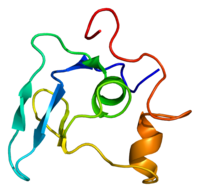
High doses of CRISPR/Cas9 ribonucleoprotein efficiently induce gene knockout with low mosaicism in the hydrozoan Clytia hemisphaerica through microhomology-mediated deletion
Sign Up to like & getrecommendations! Published in 2018 at "Scientific Reports"
DOI: 10.1038/s41598-018-30188-0
Abstract: Targeted mutagenesis using CRISPR/Cas9 technology has been shown to be a powerful approach to examine gene function in diverse metazoan species. One common drawback is that mixed genotypes, and thus variable phenotypes, arise in the… read more here.
Keywords: microhomology mediated; clytia; crispr cas9; gene knockout ... See more keywords

CRISPR/Cas‐based precision genome editing via microhomology‐mediated end joining
Sign Up to like & getrecommendations! Published in 2020 at "Plant Biotechnology Journal"
DOI: 10.1111/pbi.13490
Abstract: Summary Gene editing and/or allele introgression with absolute precision and control appear to be the ultimate goals of genetic engineering. Precision genome editing in plants has been developed through various approaches, including oligonucleotide‐directed mutagenesis (ODM),… read more here.
Keywords: genome editing; microhomology mediated; crispr cas; precision genome ... See more keywords

Microhomology-Mediated High-Throughput Gene Inactivation Strategy for the Hyperthermophilic Crenarchaeon Sulfolobus islandicus
Sign Up to like & getrecommendations! Published in 2017 at "Applied and Environmental Microbiology"
DOI: 10.1128/aem.02167-17
Abstract: ABSTRACT Sulfolobus islandicus is rapidly emerging as a model system for studying the biology and evolution within the TACK lineage of the archaeal domain. As the tree of life grows, identifying the cellular functions of… read more here.
Keywords: gene inactivation; islandicus; microhomology mediated; microhomology ... See more keywords

Microhomology-Mediated Break-Induced Replication: A Possible Molecular Mechanism of the Formation of a Large CNV in FBN1 Gene in a Patient with Marfan Syndrome.
Sign Up to like & getrecommendations! Published in 2022 at "Current molecular medicine"
DOI: 10.2174/1566524022666220428111943
Abstract: BACKGROUND Marfan syndrome (MFS) is an autosomal dominant multisystem disorder caused by mutations in the fibrillin-1 gene (FBN1). A small portion of them is copy number variations (CNVs), which can occur through recombination-based, replication-based mechanisms… read more here.
Keywords: replication; fbn1 gene; marfan syndrome; microhomology mediated ... See more keywords